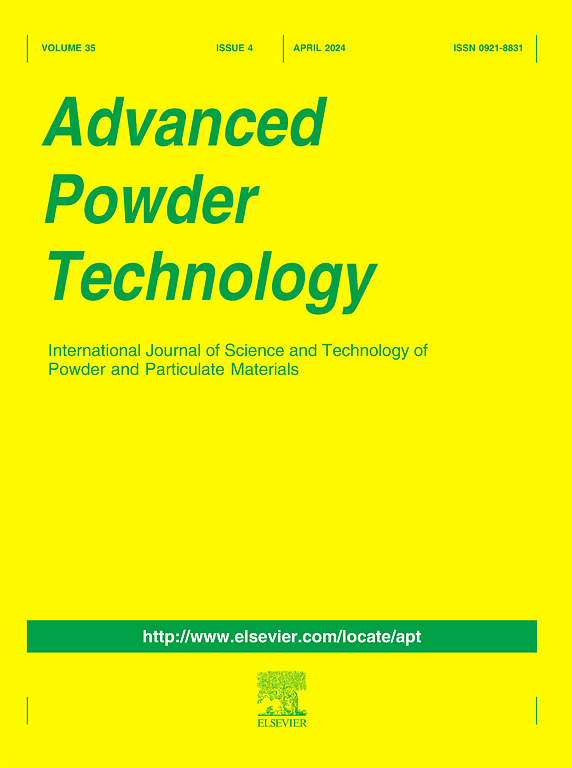热处理对中空二氧化硅纳米颗粒亲疏水结构的影响
IF 4.2
2区 工程技术
Q2 ENGINEERING, CHEMICAL
引用次数: 0
摘要
以聚丙烯酸/氢氧化铵为模板制备了具有内腔和多孔硅壳的中空二氧化硅纳米粒子(HSNPs),并研究了热处理对其结构和亲疏水性能的影响。随着热处理温度的升高,硅壳内微孔数量减少,而hsnp的内腔(中孔)保持不变,直至900℃。微观结构的改变导致了hsnp的比表面积(SSA)的降低。在1100℃时,观察到SSA急剧下降,伴随着内腔的部分坍塌和颗粒之间的颈缩,表明发生了烧结。随着温度的升高,表面硅烷基团的数量减少,由于硅烷基团之间的距离足够近,可以相互反应,形成疏水的硅氧烷键。本文章由计算机程序翻译,如有差异,请以英文原文为准。

Effect of thermal treatment on hydrophilic/hydrophobic structure of hollow silica nanoparticles
Hollow silica nanoparticles (HSNPs) having inner cavity and porous silica shell were prepared using polyacrylic acid/ammonium hydroxide templates, and the effects of thermal treatment on their structural and hydrophilic/hydrophobic properties were investigated. As the temperature of the thermal treatment increased the number of micropores within the silica shell decreased, whereas the inner cavity (mesopores) of the HSNPs remained unchanged up to 900 °C. The change in the microstructure led to a reduction in the specific surface area (SSA) of the HSNPs. At 1100 °C, a sharp decline in SSA was observed, accompanied by partial collapse of the inner cavity and necking between particles, indicating sintering had occurred. The number of surface silanol groups decreased with increasing temperature, forming hydrophobic siloxane bonds because the silanol groups were close enough to react with each other.
求助全文
通过发布文献求助,成功后即可免费获取论文全文。
去求助
来源期刊

Advanced Powder Technology
工程技术-工程:化工
CiteScore
9.50
自引率
7.70%
发文量
424
审稿时长
55 days
期刊介绍:
The aim of Advanced Powder Technology is to meet the demand for an international journal that integrates all aspects of science and technology research on powder and particulate materials. The journal fulfills this purpose by publishing original research papers, rapid communications, reviews, and translated articles by prominent researchers worldwide.
The editorial work of Advanced Powder Technology, which was founded as the International Journal of the Society of Powder Technology, Japan, is now shared by distinguished board members, who operate in a unique framework designed to respond to the increasing global demand for articles on not only powder and particles, but also on various materials produced from them.
Advanced Powder Technology covers various areas, but a discussion of powder and particles is required in articles. Topics include: Production of powder and particulate materials in gases and liquids(nanoparticles, fine ceramics, pharmaceuticals, novel functional materials, etc.); Aerosol and colloidal processing; Powder and particle characterization; Dynamics and phenomena; Calculation and simulation (CFD, DEM, Monte Carlo method, population balance, etc.); Measurement and control of powder processes; Particle modification; Comminution; Powder handling and operations (storage, transport, granulation, separation, fluidization, etc.)
 求助内容:
求助内容: 应助结果提醒方式:
应助结果提醒方式:


